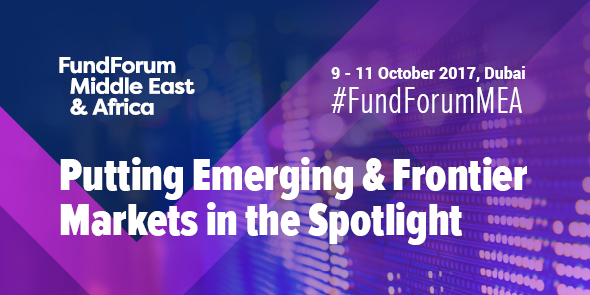Paul Forsyth the founder and managing partner at Apache Partners. In the article below, Paul sets out some general comments on the issues related to his presentation at the upcoming FundForum Middle East & Africa.
A historical perspective
When investors began looking at emerging markets some 30-40 years ago, their focus was on regional asset allocation with south east Asia and Latin America being the only realistic areas of focus. Their aim was to simply get access to what were seen to be the new faster growing economies. Over the next decades, the smaller markets in these regions began to develop and investors began to look at a more country specific approach. Still, in many cases, liquidity in the markets was limited as were the number of investible stocks.
Then came the BRICS markets and although many asset allocators recognised the potential, many were slow to commit to these areas. As well as investment challenges, there were concerns about systematic issues including custody and trading costs.
Nowadays, the more established of the emerging markets offer investors a great deal more choice and investors have a greater confidence in market structure.
Many investors looked to the benchmark providers such as MSCI to provide guidance on portfolio allocations leading them to focus on the more liquid stocks in the more liquid emerging markets. Reflecting the opportunities in the markets, both benchmarks and portfolio content largely ignored non-mainstream companies. Smaller companies scarcely featured in portfolio. Nowadays, the more established of the emerging markets offer investors a great deal more choice and investors have a greater confidence in market structure.
At the outset, long sighted investors simply wanted to gain exposure to emerging markets. Over time, asset allocation between the markets and the search for ‘beta’ became more relevant. In regions like Asia, investment funds became more sophisticated. The offerings moved on from pan-Asia regional funds to ‘Asia ex-Japan’, ‘Asia ex Japan & Australia’ and then to ASEAN and then to country funds. Similarly, in Latin America, investors firstly focused on regional funds and then, as the domestic markets slowly developed, they began to look at opportunities at a country fund level.
In these regions, there is scope for benchmark-driven fund managers to add value through asset allocation and increasingly through stock selection.
Frontiers: Africa and the Middle East
There are are strong parallels between the development of the Asian and Latin American markets and those of Africa and the Middle East. Investors looking at the latter have alternatives.
For Africa, they can look at less than 80 offshore funds either managed within the region (mainly from South Africa) or from outside (mainly from London). Whilst investment opportunities began as pan-African funds, the trend more recently has been to treat South Africa separately and the majority of regional funds now focus on sub-Saharan Africa. There are virtually no country funds, even for the largest market – Nigeria. The North African markets are also included in some regional fund portfolios.
In the Middle East, there are over 100 international funds providing access. These include MENA regional, GCC focused, along with a limited number of country funds. For local investors, however, there are a large number of vehicles ranging from money funds, to country equity and sectoral focused alternatives.
Benchmark Issues
A feature of the internationally recognised benchmarks for both regions is the concentration both by country and by sector. Benchmarks like those of MSCI look at tradable stocks and look to maximise market coverage. The benchmark-featured stocks are in the larger markets and, in Africa for example, tend to be concentrated in sectors such as financials (mainly banks), telecoms and consumer staples. In MSCI ex-South Africa regional, for example, 60% of the benchmark is concentrated in ten stocks, with
five banks representing 30% of the index. In the Middle East, whether or not Saudi Arabia is included, around 50% of the recognised benchmarks are represented by financials (once again, largely banks).
Adding value through alpha or beta
Global asset allocators need to decide their commitment to emerging markets (and to the smaller subset of frontier markets). They will initially look regionally and then down to a country level. Their search is for ‘global beta’. The successful managers have added value here because of the variability of returns in the different regions.
Let’s look at the definition of ‘alpha’ - it is a measure of an investment’s performance on a risk-adjusted basis. It takes the volatility (price risk) of a security or a fund and compares its risk-adjusted performance to its benchmark. The excess return is the alpha.
My contention is that asset allocators have less scope for adding value through stock selection. If they use funds, they will be relying on the stock selection capability of their selected managers (trusting or just hoping that they may generate some ‘alpha’). If they play directly, they will be sticking to the largest stocks in the market. There is less liquidity outside the major stocks and the costs of trading....well, that’s another issue altogether.
Want to hear more? Paul will be delivering a keynote presentation at FundForum Middle East & Africa in Dubai on 9th October.
Find out more about the region's leading asset management event.

